Chair exercises can help people age 65+ retain independence
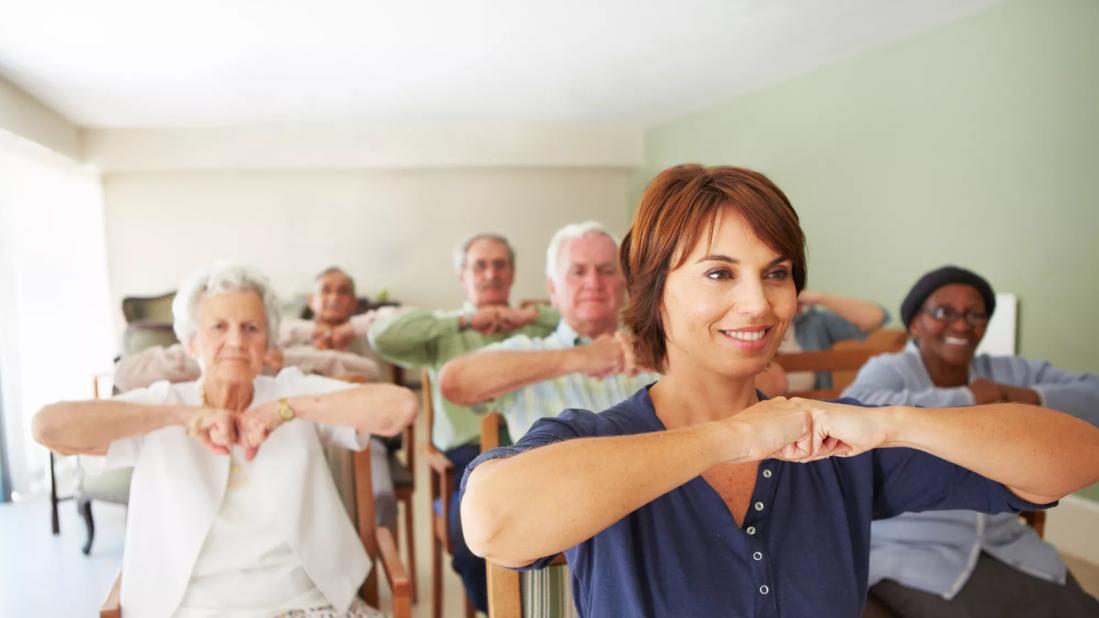
Exercising regularly can help keep you active as you age. It can help keep you stronger and more flexible. And it can help limit some health conditions that can come with aging, like osteoporosis, heart disease and deconditioning.
Cleveland Clinic is a non-profit academic medical center. Advertising on our site helps support our mission. We do not endorse non-Cleveland Clinic products or services. Policy
But how do you practice fitness as you advance in years, especially if you have mobility limitations?
Two words: Chair exercises.
“Seated or standing chair exercises can help you to safely and effectively increase muscle tone, flexibility and even get your heart rate up a bit,” says physical therapist Tobi Jevnikar, PT. “Everyone at every age and ability can benefit from exercise, and chair-based exercises are modifications that can help you to exercise safely.”
Even better: No fancy equipment or gym membership needed.
Jevnikar shares how chair exercises work, who should try them and some examples of chair exercises to get you started.
The idea that chair exercises can help you age more successfully may sound too good to be true. But research shows that chair exercises can help you better meet the challenges of carrying out everyday tasks.
Researchers in those studies noted that following a chair exercise routine helped with elements like:
In other words, chair exercises may not be the key to losing weight or preparing you for a hot yoga class. But what they can do is help build your strength and stamina. That means you may be better able to do things like walk short distances, vacuum, carry a pot of water from the sink to the stove and load laundry into the dryer.
“A chair exercise program can make a difference as you age to help you stay independent and go about your day-to-day activities successfully,” Jevnikar states.
There’s a wide range of physical fitness and exercise abilities at any age. Of course, there are fitness enthusiasts who run 5Ks and lift weights at the gym well after retirement. And if your health allows for it, there’s no reason not to keep up that pace.
But if it’s risky for you to engage in more strenuous exercise, chair exercises could be up your alley.
“We typically recommend chair exercises to people starting around age 65 or older, as well as for people who use assistive devices like walkers or wheelchairs,” Jevnikar shares. “They can benefit anyone for whom mobility or balance is a concern.”
The following list of chair exercises is by no means exhaustive. After all, there are probably hundreds of ways to get more movement into your day, even while seated.
But Jevnikar suggests these as some of the best chair exercises that are well tolerated by most people and can help you to stay strong and flexible as you age.
“We lose muscle mass as we age so it’s important to do what you can to maintain strength,” she notes. “I suggest following a routine that focuses on several muscle groups to work the muscles across your whole body.”
In other words, your chair exercise program should ideally target all of your major muscle groups — from your arms to your core to your legs and more.
To get started, sit in a steady chair with a back and a firm bottom. Not a couch or other chair that you sink into. And nothing on wheels. Dining room table chairs without armrests are usually good choices.
These exercises are safe to do every day for most people. Jevnikar recommends starting with one set of 10 and working up to two to three sets of 10 if tolerated.
Muscle group: Legs.
Need a little more challenge? Try it with shoes on. Or use ankle weights to add a bit of resistance.
Muscle groups: Abdominals and back.
The movement here is subtle. But working to move your pelvis up and back can help to counteract the effects of swayback, like lower back pain.
Muscle group: Back of lower legs.
Muscle group: Front of lower legs.
Muscle groups: Back and upper chest.
“Lots of us get into a poor posture position where the weight of your head pulls it forward and you wind up with a rounding in the shoulders,” Jevnikar says. “This kind of exercise can help to build strength to bring your shoulders back into alignment.”
Muscle groups: Hips/inner thighs.
Grab a pillow to get started with this strengthening exercise for your lower body.
Muscle groups: Hips/outer thighs.
Muscle group: Arms.
If that’s easy for you, try adding some weight. Hold a can of soup or put on wrist weights if you have them.
Muscle groups: Arms, shoulders and upper back.
Hold a can of soup or use a wrist weight to add resistance if you need more challenge.
Muscle groups: Hips and legs.
Getting your knees up high can help you to get more range of motion in your hips. If your body allows, you can march while standing and hold the back of a chair for support.
Or opt for a seated march, like this:
Muscle group: Abdominals.
Always keep safety top of mind when doing any kind of exercise. Push only to the point where you can feel your muscles working. Not to the point of pain or exhaustion. Remember that you’re working to build muscle and strength. Overdoing it is only going to set you back.
“A little muscle soreness from exercise is normal,” Jevnikar reassures. “But if you experience any joint pain doing exercises or if your pain doesn’t resolve, that’s your body telling you to back off.”
If you’re wondering whether chair exercises are right for you, talk with a healthcare provider, like a primary care physician or physical therapist. They can assess your present fitness level and recommend an exercise routine that best matches your goals and considers any limitations you live with.
Learn more about our editorial process.

Both are needed for a healthy body
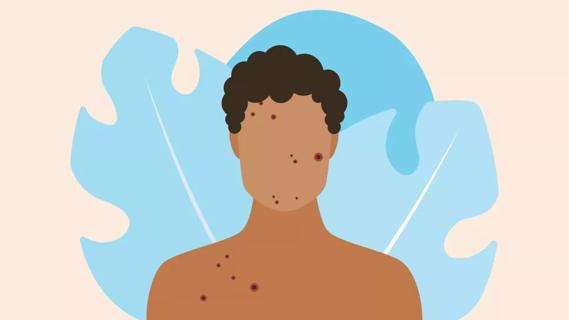
As you age, hormones can continue to play a big role in breakouts
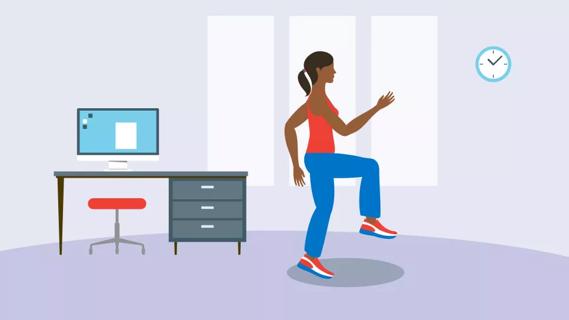
Counteract psoas muscle stiffness and soreness with stretches that lengthen and strengthen
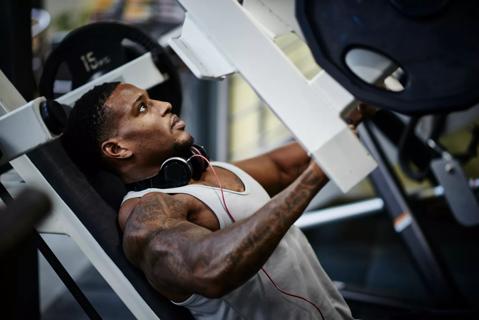
It may be OK, depending on your health, fitness level and type of exercise
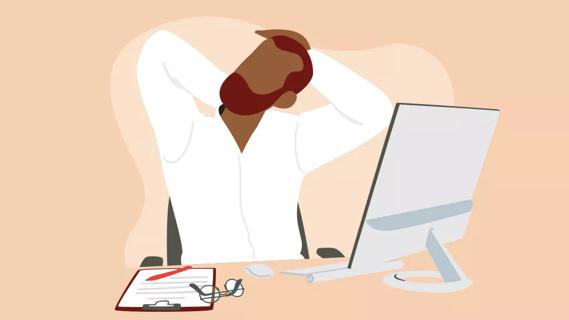
Simple exercises like wall angels and pelvic tilts can help keep your body in an optimal position — and help undo years of improper posture habits
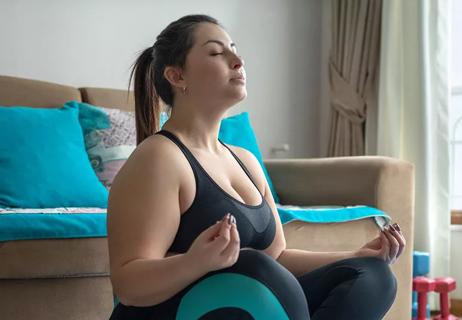
Losing belly fat can reduce your risk for chronic health conditions — try focusing on a diet high in lean protein, exercising regularly, reducing stress and getting quality ZZZs

With repeat injections over time, you may be able to slow the development of new wrinkles

The cosmetic injection may help train your muscles out of frowning, but there’s no hard data to say for sure

Your metabolism may torch 1,300 to 2,000 calories daily with no activity

A gentle touch in all the right places may help drain your sinuses